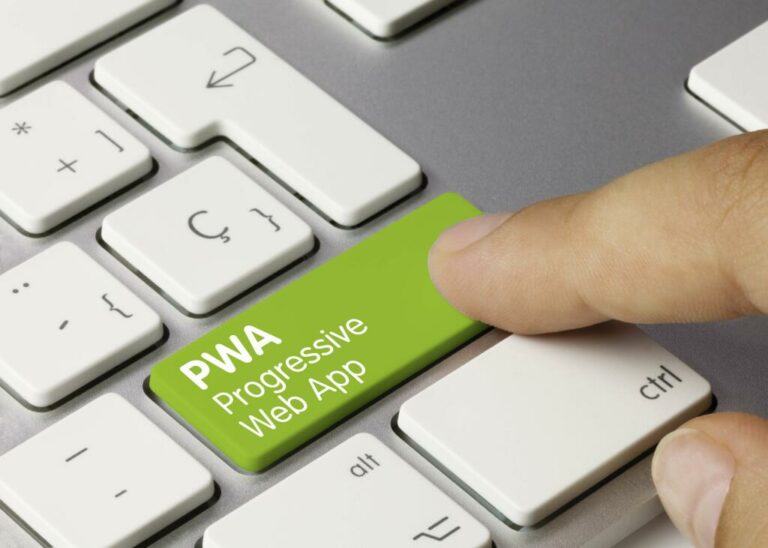Content
This is helpful to prevent secret settings from being checked in to source control for security purposes. OpenXcell network has experts across a wide variety of software development languages and technologies. See the list below to find the profile did you can choose from based on your product development requirement. Tailored to your needs and industry, get a custom software development team of techies with high caliber and experience. OpenXcell brings a team of developers to provide premium quality solutions and ensure complete transparency, authenticity and guaranteed delivery of results. Enterprises are making their moves toward DevOps methodologies and Agile culture to accelerate the delivery speed and ensure product quality.
Continuous delivery is the ability to deliver software that can be deployed at any time through manual releases; this is in contrast to continuous deployment which uses automated deployments. According to Martin Fowler, continuous deployment requires continuous delivery. Academic literature differentiates between the two approaches according to deployment method; manual vs. automated. Software organizations strive to deliver good quality software to their customers based on the need and market requirements.
Teams are free to pick Harness modules without purchasing the entire platform. Every Harness product is developed to be standalone in quality and functionality. Rollback – If something in the verification step reveals an issue, then a pipeline should be able to roll that deployment back. A quick search for Continuous Delivery tools will turn back a long list of companies that literally have CI in their name… not CD. Assorted bug fixes, reliability fixes, and performance improvements.
Marketing
Some manual gates might be questionable, whereas some could be legitimate. One legitimate scenario allows the business team to make a last-minute release decision. Applications need storage, computing, and network requirements. Now we can configure everything to support an application using tools that are based on the principles of “Infrastructure as Code” and “Infrastructure as a Service “.
- Integration, performance, and security tests validate systems in the system phase.
- Offshoring can help you fast track the team-building process.
- An introduction to the continuous delivery pipeline, including best practices, benefits, and important CD tools.
- As you make more rapid, smaller software releases through agile development, your focus will become tighter on the individual stages of software development.
- Puppet – A configuration management platform that is available both as an open source project and as a proprietary tool for enterprise companies.
- Mobile Testing Click-and-run cloud environments for native apps and mobile browsers.
Configure CD of solutions with Docker Compose to Service Fabric Cluster. Configure CD of solutions with Docker Compose to App Service Linux. Fixed a bug where spaces in a repo name would cause CICD setup to fail. Open any of your VSTS hosted solutions on the Visual Studio IDE, and you will be automatically notified via the new Toast notification mechanism. You will not be bothered with multiple notifications of several items are being updated at the same time. Notifications will be batched and you will only be presented with a single notification.
Atlassian University
The pipeline first builds components – the smallest distributable and testable units of the product. For example, a library built by the pipeline can be termed a component. Build and monitoring of externally-run jobs (e.g. cron jobs). Various plugins are available to create good dashboards using the tool.

In this stage, code is deployed to production environments, including public clouds and hybrid clouds. The deployment automatically launches and distributes software to end users. The automation tools move the tested and integrated software to places where it can be deployed to end users, such as an app store. Continuous delivery is the ability to push new software into production multiple times per day, automating the delivery of applications to infrastructure environments.
Feedback allows teams to measure results so they have firm evidence on which to base new projects. When teams get rapid answers on which workflows and approaches deliver successful builds, that knowledge goes into every future build. In this first phase, developers merge their code changes with primary code repositories for their projects. As developers push out code, they automatically trigger software builds. There is no universal ‘right tool’ for continuous deployment processes.
Continuous Delivery
Buddy supports Node.js, Angular, Rails, Python, and a few other programming languages. Understand what end users expect from products, since this dictates how software development teams will be aligned to enable these capabilities. A software solution may have many features, but some of them—or even just one of them—may be most critical to customers.
This secondary code base is a test suite and acts as a set of assertions that assures the primary code base is working correctly without bugs. During development, these tests are run by developers to validate that new code has not caused any regression on existing features. These test cases can also be run by extraneous tools to automate this validation process.

Finally, smoke tests validate the product in the production phase. It illustrates how developers write code on their laptops and commit changes to a source code repository, like Bitbucket. By code, we mean the system under test, the tests, and the infrastructure used to deploy and maintain the https://globalcloudteam.com/ system. Bitbucket Pipelines can ship the product from test to staging to production, and help customers get their hands on those shiny new features. It’s not uncommon for the integration and test/fix phase of the traditional phased software delivery lifecycle to consume weeks or even months.
Personal tools
Unless teams are disciplined, pipelines can shoot faulty code to production, only faster! Automated software delivery pipelines help organizations respond to market changes better. You’re doing Continuous Delivery practices when you can perform push-button deployments of any version of the software to any environment on demand. In order for us to ensure that we meet all these requirements, tools are used in continuous delivery to implement the processes successfully. Hence, the organization has to find a reliable method to develop, release and modify software easily and frequently without issues.
A quick glance at the product section of their website will show you the breadth of their offerings. We recommend going with a platform that emphasizes software delivery specifically. Testing and QA – These tests are normally performed in addition to tests that are run during the build process. A CD tool should allow you to incorporate your existing test automation (regression testing, etc.) into a pipeline. Continuous Delivery is the process of deploying build artifacts into an environment.
You can pay for more concurrent builds or more parallel pipelines, with larger instance sizes. Seamless third-party integrations, smart notification management, ci cd maturity model and project dashboards to provide a high-level overview of your projects and their health. Open-source projects may be applied at no charge on travis-ci.org.
As all of you know, wherever there are custom scripts, there’s an opportunity for a new solution. This is where CI decoupled from CD and Continuous Delivery tools entered the market. Not to mention successful CD best practices look different at every company. Some companies want to deploy multiple times an hour, and some companies just want to reach monthly releases.
Tips for scripting tasks with Bitbucket pipelines
The Continuous Delivery Tools for Visual Studio extension makes it simple to automate and stay up to date on your DevOps pipeline for ASP.NET and other projects targeting Azure. The tools also allow to improve your code quality and security. A pipeline so you can automatically build when pushing changes, deploy to your cloud, incorporate builds and deployments into your toolchains, and manage deployments across your toolchain. The core pillar of a CI / CD system is the support and integration of the underlying Version Control System . The most popular VCS’s are Git, Subversion, Mercurial and Perforce.
Engineering teams can optimize their communication and delivery speeds by using a CI tool. The pillar conceptsto consider when choosing a CI tools are version control system support, on-premise vs cloud hosting, deployment pipelines, and external application integrations. Most serious software projects include an additional code base that is not explicitly responsible for the business product and features.
How intelligent automation changes CI/CD – InfoWorld
How intelligent automation changes CI/CD.
Posted: Tue, 11 Oct 2022 07:00:00 GMT [source]
This results in the need for proper continuous integration and continuous delivery (CI/CD) tools. A “good” CI/CD tool can leverage teams’ current workflow, to best exploit the automation feature and create a solid CI/CD pipeline, and give teams the boost they need to thrive. Software development teams need solid, tested processes for CI/CD, as well as testing solutions that meet the needs of the codebase. Also, teams need automation to deploy solutions so that they can eliminate the need for time-consuming manual deployment. Continuous delivery contrasts with continuous deployment , a similar approach in which software is also produced in short cycles but through automated deployments rather than manual ones.
Marketplace
Well, the CI tools are great to build the artifacts deployed by your CD solution. Probably the most important foundational pillar of continuous integration is source control version management. It is used to communicate and resolve editing conflicts between multiple developers working in the same codebase. Source control version management comes in a variety of tools, the most popular being Git and Subversion. CI-as-a-service products center around theversion controlsystem. You can quickly develop your release process from builds and tests through deployments.
Invest in experienced resources and get the quality solutions you need in minimum time. This list includes the best 14 CI/CD tools that are currently the most popular in the market. We hope this list has provided the sufficient information you need to choose software that best fits your specification. The CI/CD tools mentioned in this list are the matured ones with the essential capabilities for your projects.
Stages of the CI/CD pipeline
Spinnaker is an open-source solution brought to you by Netflix. CI Tools – These are tools optimized for Continuous Integration, but can be extended to accomplish CD with enough custom scripting. For the purposes of this exercise, we’ve broken down CD solutions into four categories. Some CD solutions place emphasis on a particular area, but all will have these basic concepts.